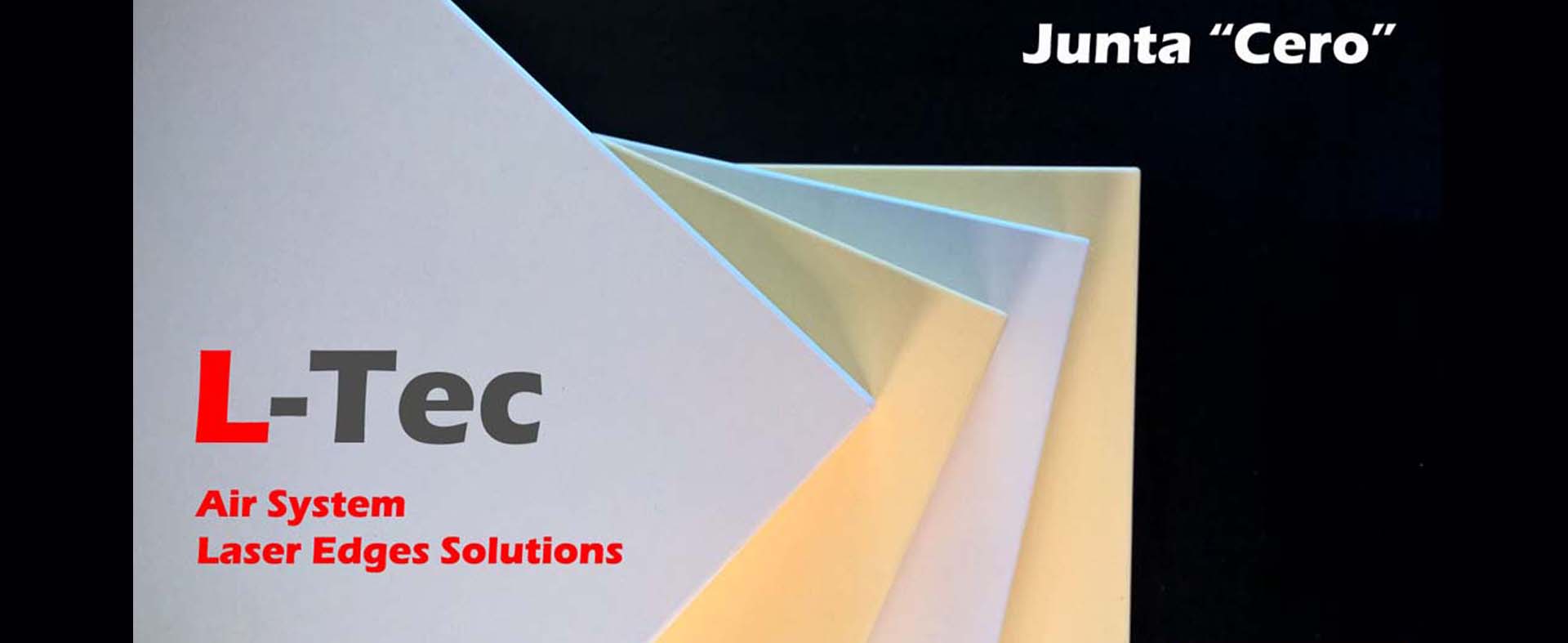We use a different system, compressed hot air (320-550° C) to make the polymer react and melt the polypropylene, the result is amazing! A maximum edging speed of 18 m/min can be reached, using panels with a maximum thickness of 60 mm. We are already testing L-Tec Air System in order to achieve a higher working speed.
L–Tec Air System is much cheaper and easier than laser or plasma or NIR (infrared lamp) or other high pressure hot air systems, and the maintenance costs are far from comparable, also the "noise" during the working phase is lower than any other system, in fact it is almost non-existent! The quality of the parts worked with our system L-Tec Air System is the same as all other systems. The parts are resistant to water, humidity and are at the same level as those obtained with other laser processes.
L-Tec Air System is installed on all BI-MATIC platemakers from small to medium range. It gives many small and medium sized companies the possibility to achieve superior edging quality, without this technology being limited to large companies.
L-Tec Air System the impact on the mechanics and other components of our machines is minimal, an "edge cooling device" reduces the temperature in order to achieve a perfect finish helped by the other units, such as the rotary copiers for the Nesting (upper) that manages to avoid scratches on the surface, the diamond tools in all the groups (grinders, rounders) providing a longer life and eliminating machine stops, the RIEPE/anti-adhesive/cleaning-polishing system and the multi-radius unit (to work all radii and thicknesses), all these features coexist with the glue system (EVA or PUR). A BI-MATIC veneer with L-Tec Air System you have the possibility to use any kind of glue. This is a significant advantage considering that in the next few years all machines will have both systems.
Another very important aspect of BI-MATIC L-Tec Air System is that applying a co-extruded edge is very simple. The polypropylene of the laser edge needs certain absorption characteristics to react to the laser light or the NIR lamp, these polymers react at a certain wavelength (mostly 980nm) to dissolve the polypropylene of 0.2 mm.
Laser and NIR lamp systems are sensitive to edge colors. Dark and light colours react drastically differently to laser light and the frequency of the NIR lamps and the position of the unit has to be adjusted very precisely (example: light white edge requires 26 J/cm2, white edge requires 25 J/cm2, light grey edge requires 23 J/cm2, light yellow edge requires 23 J/cm2 and black edge requires 14 J/cm2). If the setting is not correct the edge does not stick to the board or the fusion is so much that it burns the edge. If you are using a polypropylene co-extruded PVC, the poor adjustment of the laser or NIR lamps could cause useless risks to the environment and to people's health.
L-Tec Air System will enable any furniture manufacturer to achieve the highest quality for its customers



